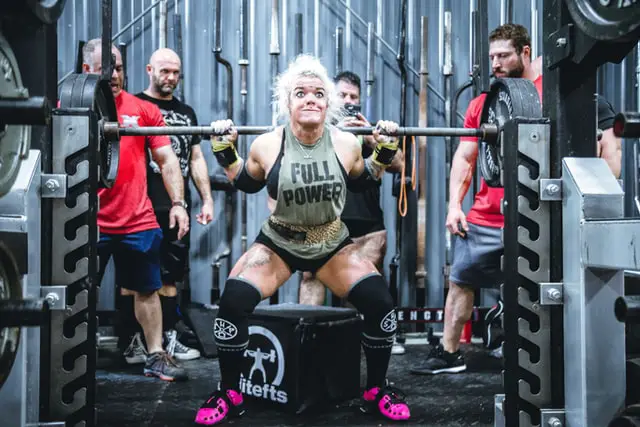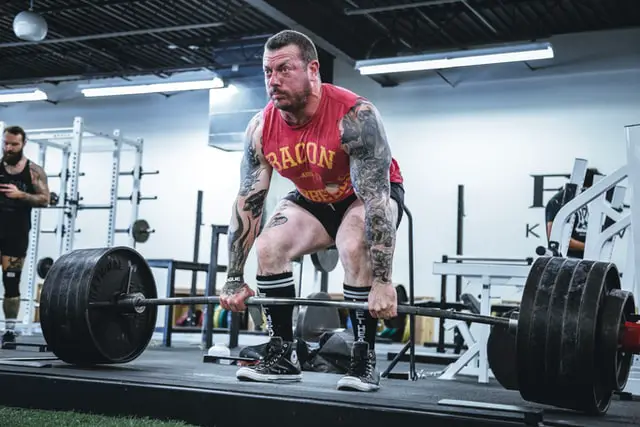Exercises For Strength Training 101
Most people are concerned about Body Building and looking chiseled but one thing they forget is Strength begets size. There are tremendous reasons one needs to be strong. Be it for bodybuilding, powerlifting, cross fit or any form of sport entirely. Strength training is very important when trying to build size.
This is why bodybuilders like Tom Platz, Stan Efferding and Arnold Schwarzenegger started their careers as Powerlifters.
Being strong doesn’t have to be a tough code to crack for sure as hell isn’t easy either. We will not know unless we try. Now let’s get into this.
A Journey To Strength Training
-
Strength Training 101
When carrying out exercises for strength training, there are principles which you must know and implement in your workout such as Reps, Tempo, Frequency, Rest, Intensity and Exercise selection.
-
Reps
It is ideal for strength training, reps to be kept around 1 -5. With anything more than that you would then be driving towards hypertrophy range.
-
Intensity
The intensity has to be around 80% – 90%, training within this range of your 1rep max which is best ideal for strength. This is not only most optimal when it comes to bodybuilding or strength, it’s also safe when training within this range to avoid injuries or joint pain.
-
Rest
For strength training, really long rest should be taken so as to hit the prescribed number of reps. Shorter rest intervals are more important for building muscle but when trying to build strength, rest adequately.
This so you can lift the weight for the prescribed number of reps. Rest should be about 2-4 mins between sets. However, when you increase the load, a longer rest period is called for.
-
Tempo
Tempo is a little different from strength training. It is not so important to follow a specific tempo because time under tension is not the issue. Your focus should be moving the weight.
There is also something you want to consider when moving the weight and that is moving it as fast as possible. This is going to help you build explosive capacity and add to your strength.
-
Frequency
When it comes to gaining strength, your frequency doesn’t have to be high as when it comes to Bodybuilding. Depending on the intensity you use, if you are using an intensity like 100, 95, or 90%, you are going to keep your frequency a bit low.
Maybe hitting an exercise once per week, but if you are going for max effort and your intensity is lower like 85%, you can add an extra day, hitting the muscle or the movement twice a week.
Exercises selection for strength training
We are familiar with the big lifts, the squat, deadlift, and the bench press and that’s why they are the basic powerlifting moves.
Not only are these lifts very important in bodybuilding but they can get you stronger as well. Doing these highly demanding multi-joint movements in your workout early when your strength levels are high helps trigger a natural release of testosterone and growth hormone both of which helps build strength.
You can also add some other exercises for strength training too such as; farmers walk, stone loading, tire flipping, overhead carries, overhead press, and many others. Doing these too can also help you in your journey of becoming stronger.
Let’s kick off
Squat
Squats have become very popular in all forms of lower body exercise. It works not only your legs, but also your back, core, generally your whole body.
But remember: “Safety is a must in this workout to avoid injury, especially in the lower back. If you are new or returning to the gym, it is usually best to start with just bodyweight and focus entirely on flexibility till your form is on track then you can start adding weight.

How to do it:
- Step under the barbell on a rack so that it rests across the back of the shoulders, then hold on to the bar to maintain balance.
- Raise your arms to remove then weight from the rack.
- Stand with toes slightly protruding and feet slightly wider than hip distance.
- Maintain a raised chest by keeping the knees aligned with the toes.
- Bend your knees and buttocks to lower your hips while keeping your back straight.
- Then push yourself back to the starting position.
Deadlift
How to do the deadlift
- Standing in front of a loaded barbell, bend your knees, lean forward, and grasp the barbell in a medium grip width with one hand in an over-hand grip, the other in an under-hand grip, or both in an over-hand grip.
- To avoid back strain, keep your back straight. When you bend your back, you run the risk of injuring yourself.
- Begin the lift by propelling yourself forward with your legs.
- Straighten yourself out until you are completely upright.
- Bend the knees, lean forward from the waist, and lower the weight to the floor to lower the weight.
- Lower the weight quickly but controlled.
Flat barbell bench press
There is no denying that a heavy bench press is the king in building big chest. The pectorals, front deltoids, and triceps. The bench press is a fundamental upper-body compound exercise that promotes muscle growth, strength, and density.
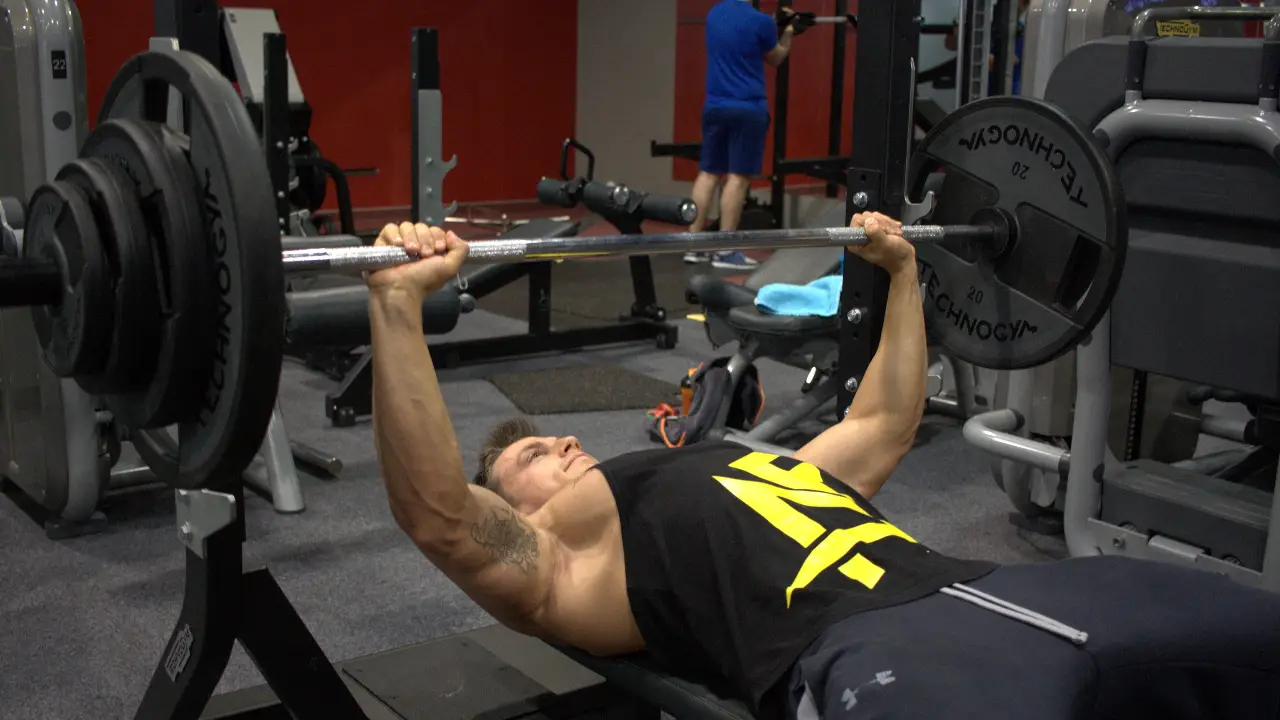
How to do the barbell flat bench press
- To balance, lie on a flat bench with your feet on the floor and a medium grip width.
- Lift the bar off the rack while holding it at arm’s length.
- Lower the bar slowly and control until it touches just below the chest.
- Then press the bar upwards until your arms are fully locked.
Pull-up
This exercise will help you widen and lengthen your lats. With the exception of the pull bar, no other equipment is required, making this a great exercise that can be done almost anywhere.
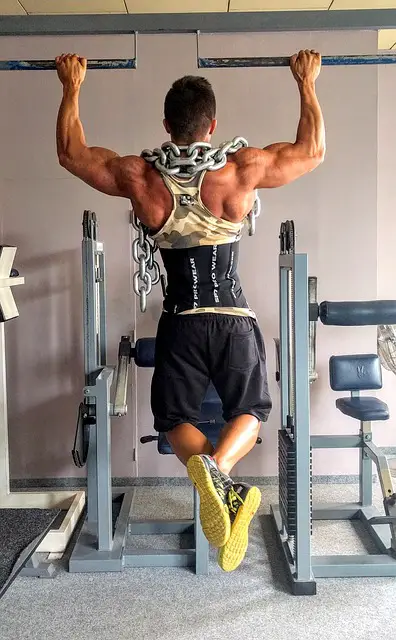
Bent-over row
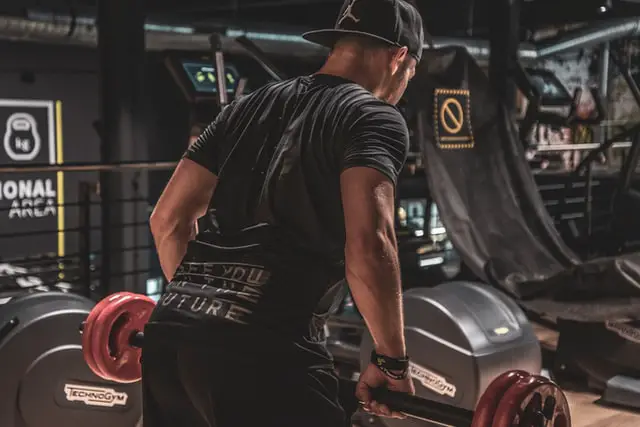
How to do it:
- Stand a few inches apart, hold the barbell with a wide over-hand.
- Bring your upper body almost parallel to the floor by bending forward.
- Maintain a straight back, face up, and hang the bar about the length of your arm.
- Lift the bar until it touches the upper abdomen, primarily with your back muscles.
- Then, with control, lower it and return it to its original position.
Farmer’s walk
The farmer’s walk helps to build and develop muscle quickly, burns fat, improves strength and performance with heavy weights, and reduces the risk of injury.
The farmer’s walk is a single movement that engages all of the muscles in the body. The forearms get a good workout as well, which helps with grip strength, while the biceps and triceps help to stabilize the elbow and shoulder joints.
Back and shoulder muscles, particularly the traps, are also heavily targeted. The chief muscles too also receive their own fair share, your abs work harder to support you and the additional weight, it is also a great exercise for the abs.
It is critical to keep your abs strong during this exercise to protect your lower back and avoid any shear stress or vertebral buckling.
The quadriceps, gluteus medius, gluteus minimus, and calf muscles are all heavily used because the farmer’s movement necessitates movement.
-
Gear required
You can do it with a dedicated farmer’s bars, as well as heavy dumbbells and kettlebells. Water jars, sand buckets, traps, and the Dead-Squat® Bar are all options. It makes no difference as long as it is heavy, safe, and challenging.

“Farmer’s Walk” by milesizz is licensed under CC BY-NC-ND 2.0
Going long distances on a single trip or increasing the number of trips will also increase the challenge. It is an exercise in pure strength and it is a very easy exercise to do
Lateral raise
Muscles worked: Shoulders
Incorporate lateral raises to your workout as a finisher, lateral raises develop the medial delts which are what gives you that nice round shoulder look. Lateral raises are the best exercise to isolate the medial deltoid properly.
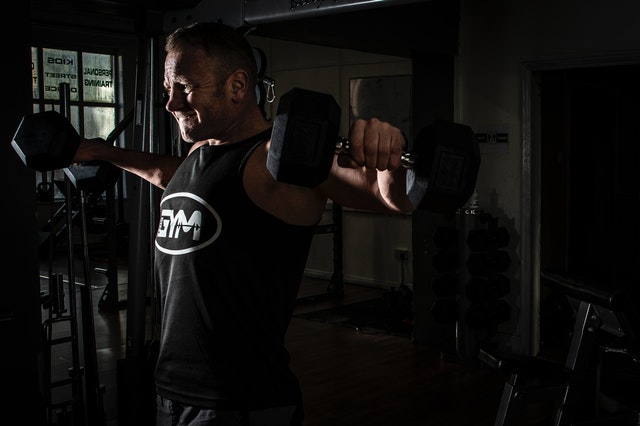
How to do it:
- Stand with your arms facing your sides, with your palms in. Raise the arms straight (pinky leading the way) at shoulder height.
Important factors to consider when embarking on exercises for strength training are:
-
Warm up
Before embarking on exercises for strength training, it is always important to warm up to make sure your nervous system is fired up.
Remember that it is not the main exercise. it’s just to get your body fired up, so warm up with a lightweight and then gradually increase till your main exercise that way you will be sure to prepare your muscles for exercise.
Warming up properly will help reduce the risk of rips and tears and bring more red blood cells – hence oxygen and nutrients – to the muscles during exercise.
-
Rest and recovery
Your body produces growth hormones when you sleep which will help you recover from your workout session. Sleeping at least 7-8 hours every day is sufficient for growth and recovery.
-
Progression is key
No matter what exercise routine you are doing, always remember progression is important. Progression will make you stronger and bigger. Don’t just go about adding too much weight, add small increments each week, as long as you are progressing, you will grow.
-
Eat more
Eating for strength differs from eating for size, your focus should be on the best diet to support your strength gains. Now is not the time to eat for abs, your diet should have a balanced diet of calories, protein, and carbs.
Conclusion
Now that you know the exercises for strength training and how to use them, focus and work hard on your training. If you do this well you will produce excellent results.
The benefits of strength training are far better – and they are important for you to live a long, healthy, and injury free life.

